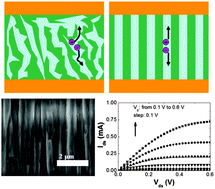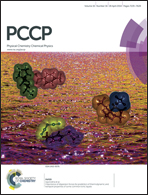Ion-dependent gate dielectric characteristics of ion-conducting SiO2 solid-electrolytes in oxide field-effect transistors
Abstract
The effect of ions on the gate dielectric behavior of oxide field-effect transistors (FETs) was studied using lithium ion-incorporated porous SiO2. The frequency dependence of the impedance was observed to vary with the ion concentrations in the ion-conducting SiO2 solid-electrolyte. The microstructure of the porous SiO2 was tailored by changing the depositions and porous SiO2 with an ordered columnar microstructure was realized, which provides an unobstructed pathway for the transportation of electrolyte ions. An enhanced electric-double-layer (EDL) capacitance of 11.9 μF cm−2 and an improved EDL formation upper-limit-frequency of ∼105 Hz were obtained. Due to the enhanced EDL capacitance, oxide FETs gated by these solid-electrolytes showed a very low operating voltage of 0.6 V. A current on/off ratio of ∼106, a subthreshold swing of ∼82 mV per decade, a near-zero threshold voltage of ∼−0.01 V, and an electron field-effect mobility of ∼27.1 cm2 V−1 s−1 were obtained. These ultra low-voltage FETs have potential applications in portable devices and biochemical sensors.


 Please wait while we load your content...
Please wait while we load your content...